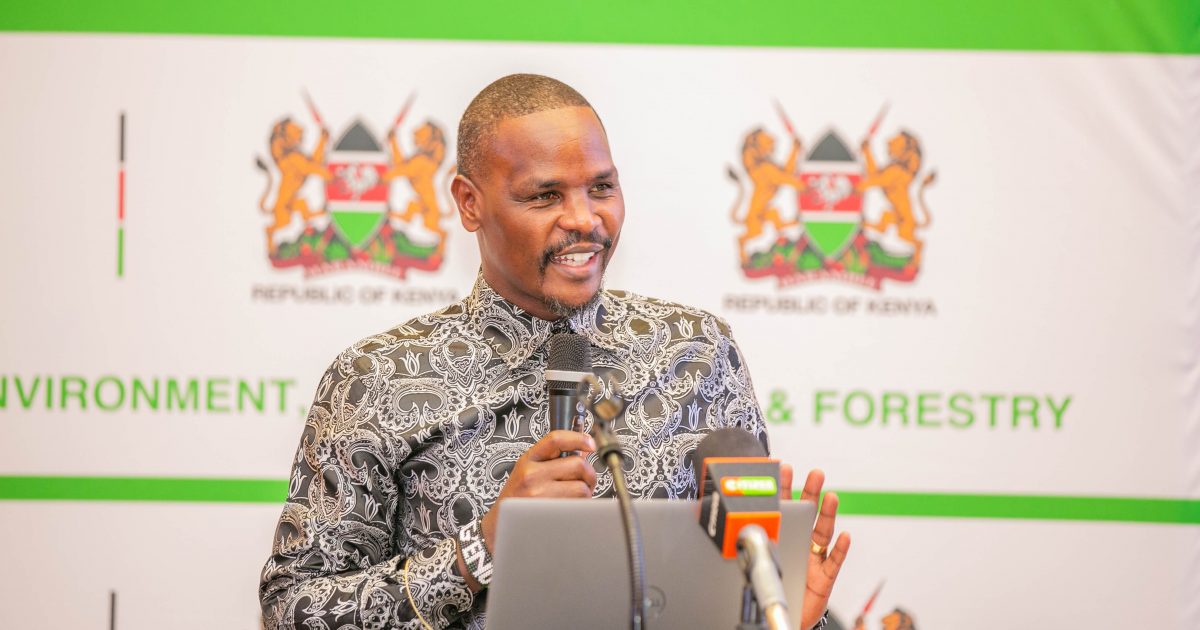Kenya has launched the National Biodiversity Coordinating Mechanism (NBCM), aimed at not only facilitating and enhancing the coordination of biodiversity-related activities but also supporting the implementation of National and International commitments to ensure the sustainable use of biodiversity for current and future generations.
State Department for Environment and Climate Change Principal Secretary (PS) Dr. Festus Ng’eno noted that biodiversity is the foundation of ecosystem services, underpinning their food security, health, livelihoods, and resilience to climate change.
Speaking in Nairobi on Friday during the launch, the PS said that conservation and sustainable use of biodiversity were crucial for achieving the Sustainable Development Goals (SDGs) and for ensuring the well-being of future generations.
According to the Kenyan Constitution under Chapter 5, Article 6, Kenya is a mega-biodiverse country rich in natural capital, and the government should provide proper protection and management of genetic resources such as aquatic systems, forests, wildlife, and agro-biodiversity, as it would not only provide the basis for economic strength and quality of life but also maintain the state’s prosperity.
“Today we are faced with unprecedented challenges. Climate change, habitat destruction, pollution, and overexploitation of natural resources are threatening our biodiversity. It is therefore imperative that we come together, share our experiences, and cooperate on strategies that will help us mitigate these threats and promote biodiversity conservation,” Dr. Ng’eno observed.
The PS revealed that the Kunming-Montreal Global Biodiversity Framework presents a strategic roadmap for nations to halt and reverse biodiversity loss, with a key objective being to restore at least 30 per cent of degraded terrestrial inland water and marine ecosystems by 2030 adding that their implementation of the framework is tailored to setting clear targets at a national level with unique national circumstances.
“Adopting the Whole of Government-Whole of Society Approach, stakeholder engagement is at the core of National Biodiversity Strategy and Action Plan (NBSAP) revision and GBF (Global Biodiversity Framework) implementation for all,” Dr. Ng’eno said.
He further revealed that target 14 of KMGBF focuses on integrating biodiversity values into policies, strategies, and practices across the public and private sectors, which aims to embed biodiversity considerations into national and local development planning, poverty reduction strategies, and accounting systems.
Dr. Ng’eno acknowledged that Kenya has signed and ratified numerous international conventions that align with the goals of the NBSAP.
However, the coordination of various actors in the implementation of the conventions had been a challenge, as witnessed over the years, hence making the establishment of the National Biodiversity Coordinating Mechanism crucial, he added.
“The NCBM is designed to enhance coordination and cooperation among state and non-state actors at all levels of governance—national, county, and community. By bringing together diverse stakeholders, the NCBM will ensure that our efforts are aligned, our resources are utilised efficiently, and our actions are impactful,” the PS said.
State Department of Wildlife Conservation Secretary Dr. John Chumo, representing the PS Wildlife, Silvia Museiya, said that NCBM alone could not achieve conservation of the country’s diversity, but it is possible through partnership with stakeholders.
Dr. Chumo urged the Wildlife Department and the sector at large to solve the conflicts in financing National Parks across the country.
By Zainap Mong’are and Judy Totari




